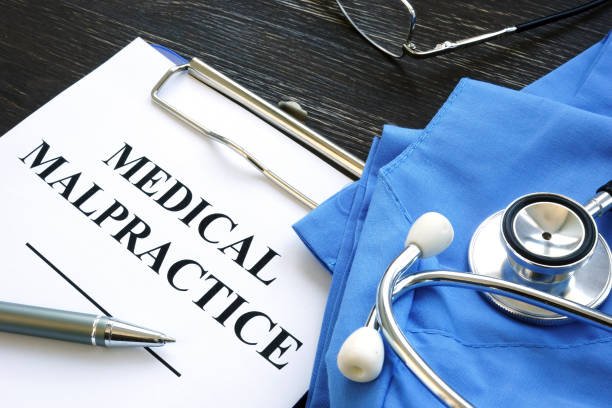Understanding the Causes of Medical Accidents
Medical accidents, also known as medical errors or adverse events, are unfortunate incidents that occur within the healthcare system. These accidents can have serious consequences for patients, ranging from minor injuries to life-threatening complications. It is crucial to explore the causes of medical accidents in order to prevent them and improve patient safety.
1. Communication Breakdown
One of the major causes of medical accidents is communication breakdown among healthcare professionals. In a fast-paced and high-pressure environment, it is essential for doctors, nurses, and other healthcare providers to effectively communicate with each other. Miscommunication or lack of communication can lead to misunderstandings, errors in treatment plans, and delayed or incorrect diagnoses.
For example, a doctor may fail to adequately communicate important information to a nurse, resulting in the wrong medication being administered to a patient. Similarly, poor communication between different departments within a hospital can lead to delays in necessary tests or procedures, potentially worsening a patient’s condition.
To address this issue, healthcare organizations should prioritize effective communication strategies, such as implementing standardized protocols for information sharing, encouraging open dialogue between healthcare professionals, and utilizing technology to facilitate communication.
2. Fatigue and Burnout
Fatigue and burnout among healthcare professionals can significantly contribute to medical accidents. Long working hours, high patient loads, and emotional stress can all lead to exhaustion and impair a healthcare provider’s ability to make sound judgments and decisions.
Research has shown that fatigue can have a similar effect on cognitive function as alcohol intoxication. This means that fatigued healthcare professionals may have reduced attention spans, slower reaction times, and impaired critical thinking skills, all of which increase the risk of medical accidents.
To combat fatigue and burnout, healthcare organizations should prioritize work-life balance for their employees. This can be achieved by implementing reasonable working hours, providing adequate rest breaks, and offering support services such as counseling or stress management programs.
3. Lack of Standardization
The lack of standardization in healthcare practices and procedures can also contribute to medical accidents. When there is no consistent approach to performing certain tasks or treatments, it increases the likelihood of errors and inconsistencies.
For example, if different healthcare providers have different methods of documenting patient information or administering medications, it can lead to confusion and potential mistakes. Similarly, the lack of standardized protocols for surgical procedures can result in variations in surgical outcomes and an increased risk of complications.
To address this issue, healthcare organizations should prioritize the development and implementation of standardized guidelines and protocols. These guidelines should be evidence-based and regularly updated to reflect the latest research and best practices. By standardizing procedures, healthcare providers can ensure consistency and reduce the risk of errors.
4. Lack of Training and Education
Inadequate training and education can also contribute to medical accidents. Healthcare professionals need to continuously update their knowledge and skills to stay up-to-date with advancements in medical science and technology. Without proper training, healthcare providers may not be aware of the latest treatment options or may not have the necessary skills to perform certain procedures safely.
Furthermore, the lack of education on patient safety and error prevention can also contribute to medical accidents. Healthcare professionals need to be trained in recognizing and mitigating potential risks in order to prevent adverse events.
To address this issue, healthcare organizations should prioritize ongoing training and education for their staff. This can include regular workshops, conferences, and online courses to ensure that healthcare professionals have access to the latest information and skills.
5. Systemic Issues
Lastly, systemic issues within the healthcare system can also contribute to medical accidents. These issues can include inadequate staffing levels, lack of resources, and financial constraints. When healthcare providers are stretched thin and resources are limited, it can increase the likelihood of errors and compromise patient safety.
For example, if a hospital is understaffed, healthcare professionals may be forced to work longer hours and take on a higher patient load, increasing the risk of fatigue and burnout. Similarly, if a healthcare facility lacks necessary equipment or supplies, it can hinder the ability to provide optimal care and increase the risk of errors.
To address systemic issues, healthcare organizations need to prioritize patient safety and allocate sufficient resources to ensure that healthcare providers can deliver high-quality care. This may involve hiring additional staff, investing in necessary equipment and technology, and advocating for policy changes to improve the healthcare system.
Conclusion
Medical accidents are a serious concern within the healthcare system, and it is important to understand their causes in order to prevent them. By addressing issues such as communication breakdown, fatigue and burnout, lack of standardization, lack of training and education, and systemic issues, healthcare organizations can work towards improving patient safety and reducing the occurrence of medical accidents. Ultimately, the goal should be to create a healthcare system that prioritizes patient well-being and provides the highest quality of care.
